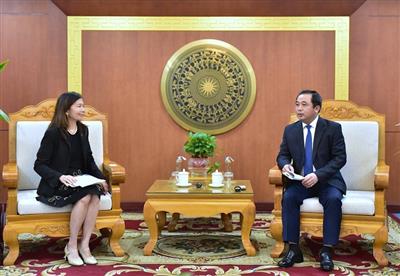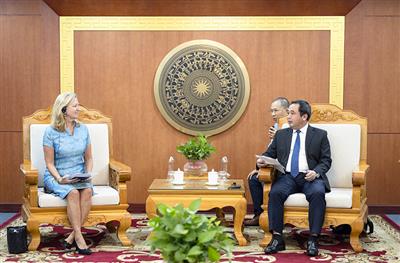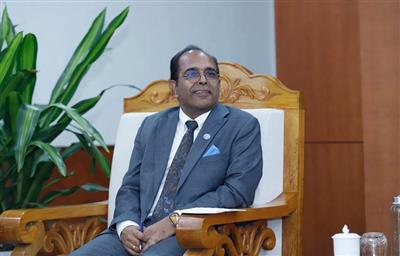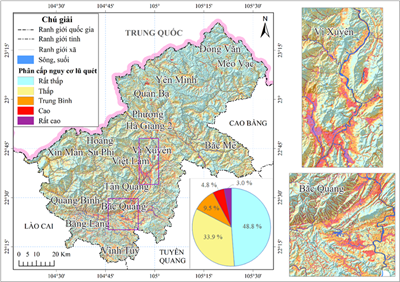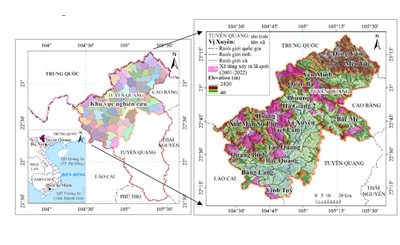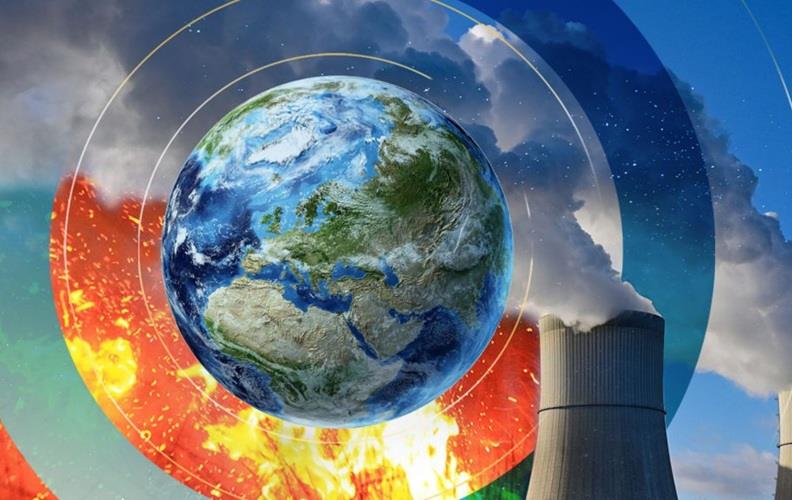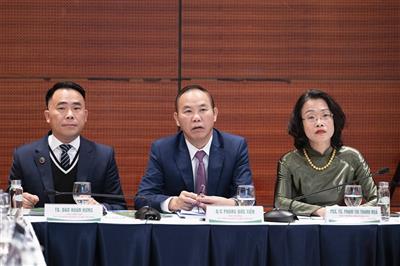
Finalizing the low-emission crop production plan amid Vietnam’s Net Zero commitment
30/07/2025TN&MTThe Ministry of Agriculture and Environment is accelerating the finalization of the “2025-2030 low-emission crop production plan” to operationalize Vietnam’s roadmap toward achieving Net-Zero greenhouse gas (GHG) emissions by 2050. The Plan focuses on transforming production models to reduce emissions, enhance resource efficiency, and improve the competitiveness of Vietnamese agricultural products in an increasingly green-conscious global market.
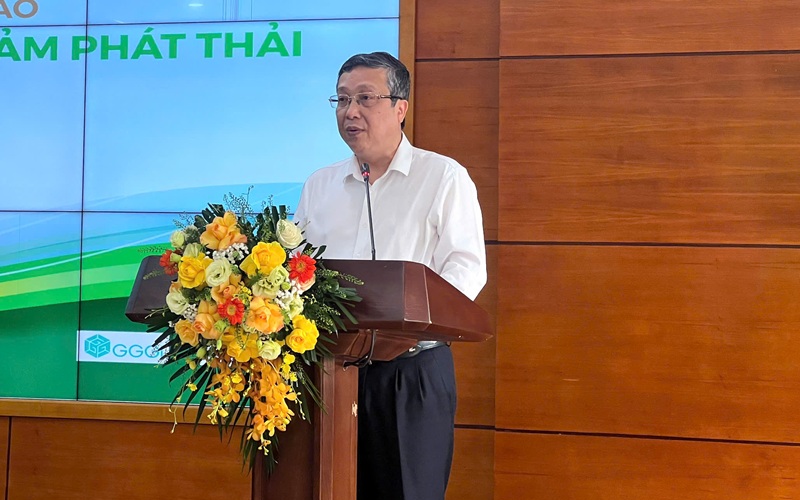
Speaking at the Consultation Conference, Deputy Minister of Agriculture and Environment Hoang Trung emphasized that transitioning to low-emission crop production is not only an urgent necessity but also a strategic driver to enhance the added value and international reputation of Vietnamese agricultural products
On July 30 in Hanoi, the Ministry held a consultation conference on the draft plan, bringing together scientists, policymakers, experts, and local representatives for in-depth discussions.
Unlocking the strategic potential of crop production in emissions reduction
At the event, Deputy Minister of Agriculture and Environment Hoang Trung stressed that shifting to low-emission crop production is both a pressing necessity and a strategic driver for increasing the value of Vietnamese agricultural exports. “Crop production is a major source of emissions, but if properly organized, it also holds the greatest potential for emission reductions,” he said.
According to Vietnam’s 2020 GHG inventory, total national emissions stood at approximately 454.6 million tonnes of CO₂ equivalent (CO₂e), nearly double the 2010 figure. Agriculture accounted for over 116 million tonnes of CO₂e, with crop production responsible for roughly 80% of that amount. Without bold action, national emissions could exceed 989 million tonnes CO₂e by 2030.
The Plan sets a target to reduce crop-related emissions by at least 10% by 2030, equivalent to 6–8 million tonnes of CO₂e annually, through interventions in rice, maize, pepper, coffee, and other key crops. Technical solutions include improved irrigation methods (e.g., alternate wetting and drying), optimized fertilizer use, biomass recycling, and biotechnology applications.
Deputy Minister Hoang Trung emphasized the importance of developing a robust Measurement, Reporting, and Verification (MRV) system aligned with international standards and building a national emissions database tailored to Vietnam’s fragmented production structure. “We don’t lack solutions, the key is choosing the right ones that can scale at the national level,” he noted.
Making low-emission practices work for farmers
Veteran policymakers contributed practical insights at the conference. Former Deputy Minister of Agriculture and Rural Development Le Quoc Doanh noted that Vietnam already has a solid technical foundation for low-emission agriculture, but success hinges on gaining farmers’ trust and delivering economic benefits. “We shouldn’t be rigid about crop or region selection, flexibility and local suitability matter most,” he said.
Mr. Le Quoc Doanh also underscored the role of communication in bridging the gap between technical know-how and public adoption. “It’s not about whether people will listen, but whether they believe. Once they believe, implementation becomes easy,” he said, citing success stories from the rice and coffee sectors.
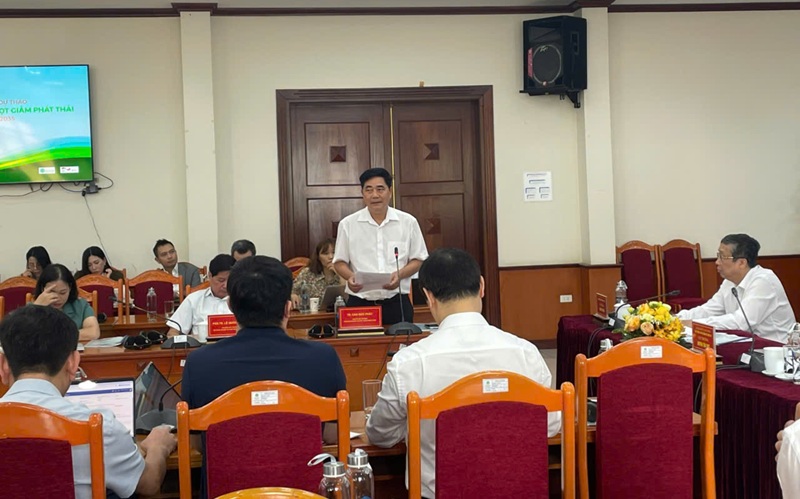
Former Minister Cao Duc Phat affirmed that low-emission production should not be a burden on farmers, but rather a means to enhance the value of their crops and improve livelihoods
Former Minister of Agriculture and Rural Development Cao Duc Phat emphasized that economic incentives must take priority. “If we can't make the numbers work for farmers, costs, incomes, any emissions pledge will remain on paper,” he cautioned. According to him, the Plan must clearly show farmers the value proposition: reduced input costs, higher selling prices, access to green finance, or lower production risks.
Drawing from his experience in agricultural leadership, Mr. Cao Duc Phat recommended focusing on crops with high emissions reduction potential and measurable outcomes, particularly rice. “Low-emission production should be an opportunity to raise agricultural value, not a burden on farmers,” he stated.
He also urged the Plan to prioritize sectors that combine high mitigation potential with stable value chains and well-defined market demand, making rice a top candidate. As a high-emission yet technically adaptable crop, success in rice could pave the way for expanding low-emission practices to other crops.
In addition, Mr. Cao Duc Phat highlighted the need for suitable financial mechanisms to support farmers, from preferential loans to input subsidies. Low-emission models typically require high upfront investment and longer payback periods, while smallholder access to capital and technology remains limited.
Bridging local realities and national strategies
Speaking at the conference, Ms. Luong Thi Kiem, Deputy Director of the Hai Phong Department of Agriculture and Environment, shared that the city has implemented effective emission reduction models, especially alternate wetting and drying (AWD) in rice. Emissions were cut by 4–7 tonnes CO₂/ha depending on season and technique. Still, she pointed out a major barrier: limited public awareness. “Farmers don’t yet see the long-term benefits, especially when irrigation fees are still waived,” she said.
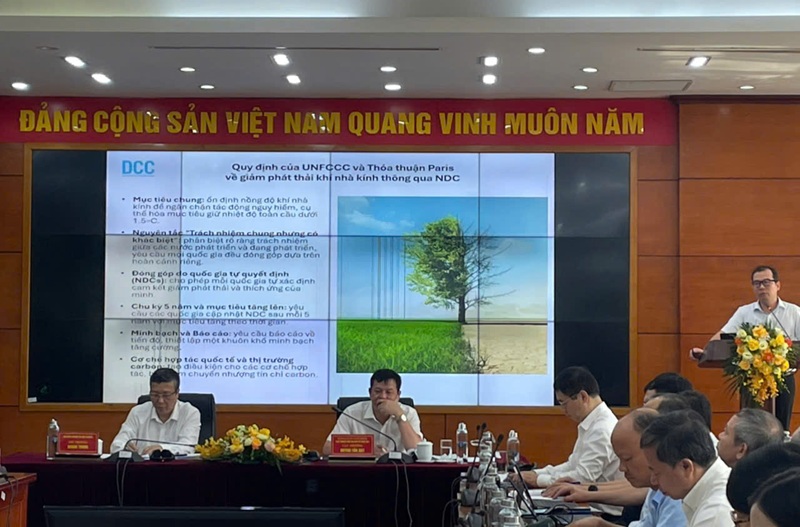
The new draft plan, led by the Ministry of Agriculture and Environment, aims to cut at least 10% of crop production emissions by 2030—equivalent to 6–8 million tons of CO₂. To achieve this goal, the plan will focus on major high-emission crops such as wet rice, maize, pepper, coffee, dragon fruit, banana, citrus fruits, and long-cycle industrial crops
Hai Phong recommended enhancing education and outreach, especially as carbon credit markets take shape. In addition, financial incentives should empower local authorities to scale successful models rather than rely solely on central government funding.
From the southern region, Ms. Dinh Thi Phuong Khanh, Deputy Director of the Tay Ninh Department of Agriculture and Environment, suggested extending the Plan’s vision to 2050 to align with Vietnam’s Net Zero pledge. She also recommended classifying crops into categories, fruits, industrial crops, food crops, to develop region-specific solutions.
A key challenge she raised was the declining capacity of grassroots agricultural staff following administrative mergers. “We’re left with just one or two agricultural officers at the commune level, not enough to implement new techniques on a large scale,” Ms. Khanh said. She proposed targeted support for community-based agricultural extension teams.
Building data infrastructure for effective emissions management
According to Dr. Mai Van Trinh, Director of the Institute of Agricultural Environment, rice emissions can be significantly reduced by switching from continuous flooding to AWD. Proper implementation could lower emissions from 13 tonnes CO₂/ha/year to 7.15 tonnes, or even less in integrated models like rice-shrimp or upland crops. “We can’t build effective policy without knowing how much we’re emitting and from where. Inventories are essential,” he stated.
Dr. Mai Van Trinh added that data must feed directly into the MRV system and carbon markets. Without reliable national emission factors, Vietnamese carbon credits are unlikely to be accepted internationally.
One illustrative example is circular straw management. Instead of burning, straw is reused to grow mushrooms, then composted or turned into biochar and returned to the soil. This model not only cuts emissions but also improves soil health and reduces input costs.
The Institute proposed establishing a data-sharing network by crop and ecological zone, integrated with the national registry to support carbon traceability, certification, and credit trading.
The consultation conference marked a strategic step in reorienting Vietnam’s crop production toward a low-emission, modern, and environmentally responsible system. Deputy Minister Hoang Trung concluded: “Transitioning to low-emission crop production is our responsibility, toward farmers, the environment, and future generations.”
Ngoc Huyen






